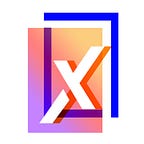Has Ethereum DeFi gained an unbeatable lead?
Ethereum DeFi field has become a playground for developers
As Ethereum 2.0 gets closer and closer to the highly anticipated version of Ethereum 2.0, competitors are striving to attract dapp developers to their platforms. This is particularly evident in the Ethereum DeFi field, which has attracted market attention for most of 2020.
The Ethereum ecosystem has now experienced many storms from the DAO incident to the collapse of MakerDAO, but it continues to develop.
More importantly, although the decentralized nature of Ethereum has proven to be flexible enough to absorb the characteristics of competitors into its ecosystem. However, when many people try to make it into the Netscape of the blockchain, it looks more and more like Google. Ethereum DeFI: daily active independent wallets and transaction volume in 2020
Competition between stablecoins
MakerDAO and its Sai and Dai stablecoins have always been the lifeblood of the Ethereum DeFi ecosystem. On the one hand, it incentivizes users to lock in their assets. On the other hand, it provides a market-dominated currency unit that can be used relatively easily between other dapps.
Of course, MakerDAO is not without defects, and has tried to solve these problems many times in other projects. Tron’s JUST attempts to use the underlying scalability of the network to improve operational efficiency.
Many projects have tried to solve the algorithmic defects in the system, while others have tried to solve the problems of asset diversity, interoperability and commercialization. Nevertheless, MakerDAO and the dapps surrounding it are still maturing and growing. MakerDao: Daily active independent wallets and transaction volume in 2020
Competition on Ethereum
Tendermint seems to be the source of the most intense competition in Ethereum. It is known as the core technology of Cosmos (committed to blockchain interoperability), but its technology is also used by Binance Chain.
Tendermint also cooperated with Kava, and the CDP launched on the project supports BTC, XRP and ATOM mortgages.
However, as MakerDAO added wBTC as Dai’s collateral, and Compound also accepted wBTC, Ethereum’s DeFi field projects have been adjusted. The data shows that wBTC is becoming more and more popular on the Internet. fluidity
Uniswap is another dapp of system importance in the Ethereum DeFi ecosystem. It is not just an exchange, but also a way to generate liquidity, which is essential for smaller projects. However, Uniswap’s market is limited and limited by the Ethereum token standard. Thorchain, also based on Tendermint, has been working on the development of a cross-chain liquidity pool.
Of particular concern is the BEP2 token on the Binance Chain. As Binance enters the DEX field and becomes one of the leaders, this kind of cross-chain liquidity research is undoubtedly necessary.
Similarly, the Ethereum dapp also shows the ability to adapt to the market.
With the introduction of Uniswap V2, Uniswap has expanded its functionality, and with the acceptance of wrapped BTC, wrapped tokens may become a way for other non-Ethereum tokens to enter the DeFi ecosystem. Uniswap: the number of daily active independent wallets and transaction volume in 2020
win-win
Terra, another Tendermint project, has entered the top 100 CoinMarketCap. In addition to implementing more complex stabilization mechanisms, Terra also has many impressive business partners. Terra seems to focus on expanding its distribution channels and has been used by mobile payment app Chai.
This may be the fatal weakness of Ethereum DeFi, because most projects lack strong financial support and business development technology, and the basic network is too decentralized to produce organized business promotion. At present, BTC and Ethereum are still the key to the entry of cryptocurrencies, but projects such as Terra may change this status quo. The revolution has not yet succeeded
Ethereum confidently adheres to this principle: “You can only win games if you play hard.” It continues to accumulate user and active data through dapps, and may begin to enhance network effects, especially in the field of DeFi. Ethereum has the largest DeFi ecosystem, and it provides additional utilities for each individual component. For example, Sai/Dai is more useful than decentralized stablecoins because more dapps accept it. The same is true for Compound and its cToken.
In addition, it is important that although Ethereum 2.0 may still have a long way to go before it is fully functional, a second-tier scalability protocol like Matic Network may effectively help Ethereum 2.0 advance.
However, the Ethereum DeFi field is still a playground for developers, and there does not currently seem to be a coherent commercialization and expansion strategy. This opens a door for competitors who can use the partnership to promote and integrate their products outside the existing crypto market.
Therefore, although Ethereum may not become Netscape in the blockchain world, if it does not solve its strategic flaws, it may become an Internet Explorer.
We will continue to focus on this aspect. Make sure to bookmark DappRadar.com and sign up for our newsletter to send updates directly to your inbox.
